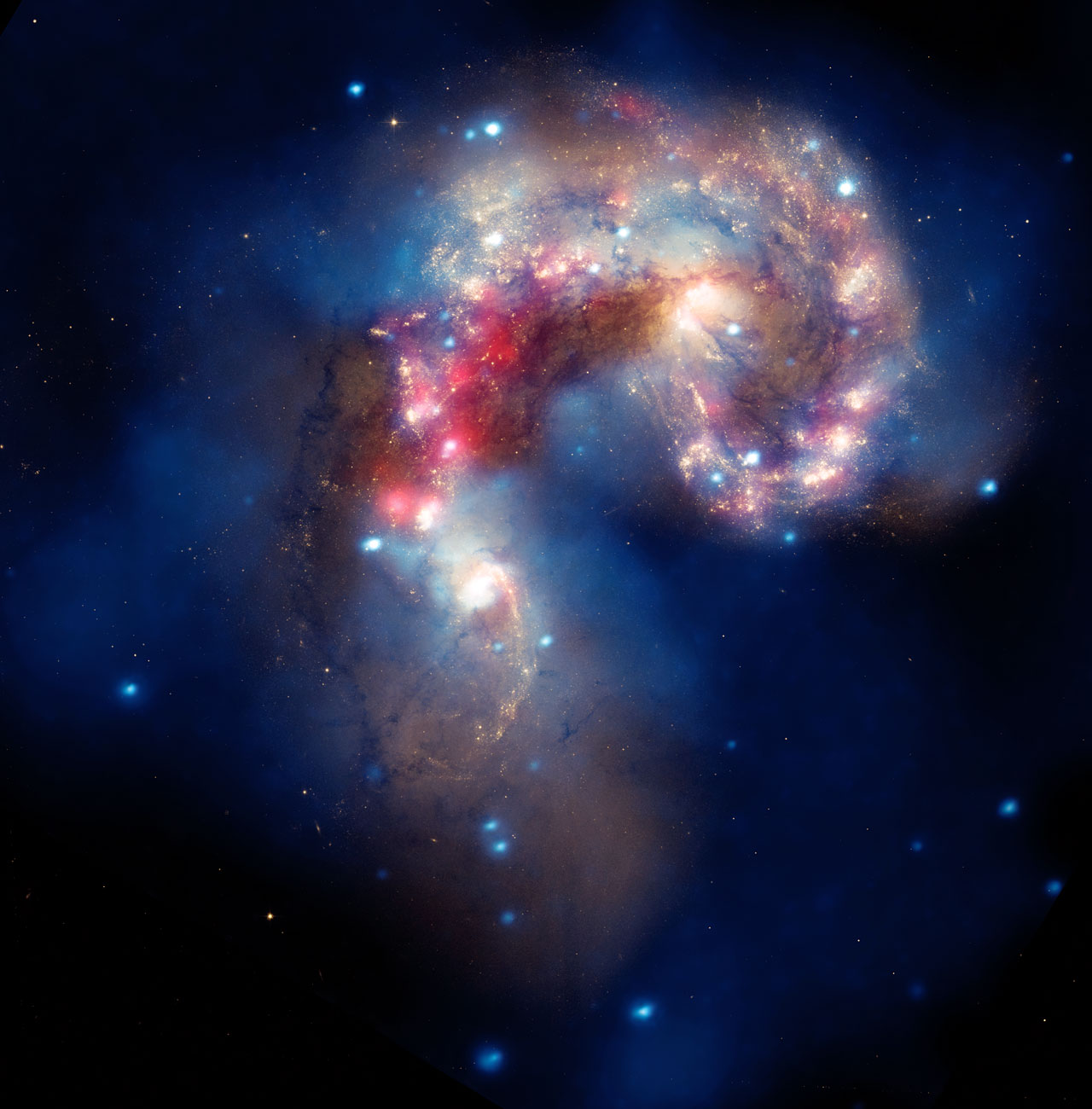The Antennae galaxies are among my favorite astronomical objects. I have even given this blog the nick name 'Science Antenna' with a lovely portray of the - Antennae. I was of course delighted today, when I saw that ESO's new ALMA telescope chose to publish images of the elegant galaxies dancing as the first result - the inauguration of the most impressive and highest lying! telescope on this planet.
The object consist of two galaxies merging. As they are smashing together they create billions of new stars, mostly in groups and clusters of stars. You'll even find some super star clusters as a result of this collision.
I will celebrate these events, the lovely collision AND the inauguration of ALMA, here with a series of images that I have collected over the years, starting with the latest - Antennae by ALMA! Enjoy!

Antennae Galaxies, NGC4038, NGC4039
Credit: ALMA (ESO/NAOJ/NRAO). Visible light image: the NASA/ESA Hubble Space Telescope

The Hubble telescope registered the sharpest image of the Antennae galaxies until now. It is expected that a complete ALMA will provide much sharper images than today, so to better match these taken by Hubble.
Credit: NASA, ESA, and the Hubble Heritage Team STScI/AURA)-ESA/Hubble Collaboration.

Antennae Galaxies as seen by around one third of the total 66 antennas comprising the ALMA telescope.
Credit: ALMA (ESO/NAOJ/NRAO).

Antennae Galaxies as seen by around one third of the total 66 antennas comprising the ALMA telescope.
Credit: B. Saxton, (NRAO/AUI/NSF), ALMA (ESO/NAOJ/NRAO). Visible light image: the NASA/ESA Hubble Space Telescope.
And now some other images of the Antennae Galaxies.

This is a composite image from the Chandra X-ray Observatory (blue), the Hubble Space Telescope (gold and brown), and the Spitzer Space Telescope (red).
Credit: NASA, ESA, SAO, CXC, JPL-Caltech, and STScI.

Credit: NRAO/AUI and J. Hibbard











